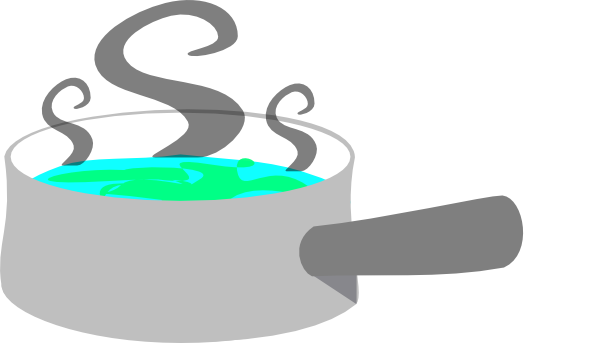So if you’ve got to melt something, like marshmallows or chocolate chips, the safest way to do it is in a double boiler. And if you need to drive to the store to get some ingredients, it’s safest to drive 10 under the speed limit. Unless it’s raining, in which case don’t go at all. But you’re going to drive to the store as fast as possible, hopefully limited by actual road conditions and the likelihood of being pulled over. Why not cook the same way?
Instead of a double boiler, select a pan with a heavy bottom, that will distribute the heat of the burner across the entire bottom of the pan. Then, you guessed it, turn the burner on high.
Once you’ve put in enough heat that the heavy pan has warmed up and your ingredients have started to melt, turn the burner down pretty low. In this case, you don’t want stuff to sizzle or boil – just melt. Keep stirring, and you’ll be surprised at how fast the stuff melts. As you stir the melted liquid onto the stuff that still needs to melt, you’re transferring the heat to where it needs to go.
Things have changed for cooking: if you’re cooking on a wood stove that also heats the house, you may need a double boiler. But you cook on a sophisticated, purpose-built appliance. Be brave, and turn up the heat.
Things have changed in product development, too, which used to be constrained by big dollar tooling costs. Circuit boards, custom ICs, injection molds, and such were high-risk investments, for which incredibly careful designs were needed. Now, circuit boards can be “turned” for every production run. The market for full custom ICs has plummeted, now that off-the shelf programmable devices can take their place. And limited plastic part runs can be done with no tooling at all, using additive machining processes.
The takeaway is that you should try to build a design (for release to customers) as quickly as possible, and take more risks. If you can do 3 releases in the time that it used to take to do one, but 1 of those releases fails due to an undetected design error, you are still ahead – you got twice the chances to meet customer needs with a new product. (Note that detection of design errors is critical for this to work – releasing defective products to customers is a quick way to destroy your brand.) Fail early, fail often, and treasure when your new souffle recipe gets rave reviews on the first attempt.
